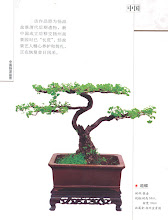



A semi-transparent "cube", with "bubbles" spread out all over its surface, is a shape very similar to the structure of "H2O", the outlook for the National Swimming Center at the 2008 Olympic Games. After the games, it will become a recreational water park open to the publicIn Chinese culture, water is an important natural element. It creates a calming atmosphere and inspires happiness. Taking full consideration of the functions of water in recreation and bodybuilding, designers have explored many ways for people of different age groups to appreciate its function. The design is called "Water Cube". Many creative designs have been employed in the creation of the swimming pools at the swimming center. Other high-tech facilities including optical devices used to define positions of athletes, and multiple-angle, three-dimensional screening systems are provided to help spectators enjoy competitions.The National Swimming Center, one of the three landmark buildings for the 2008 Beijing Olympic Games, is located inside the Beijing Olympic Park. Covering a total floor space of 50,000 square meters, it has 17,000 seats. The project costs about US$100 million. The center will be a venue for swimming, diving, synchronized swimming and water-polo games during the period of the Olympic Games. After the games, the center will become a large water recreational center open to the public. In January 2003, Beijing started to solicit design schemes for the National Swimming Center. The international competition settled on "Water Cube" as the winning scheme. It is designed by the design consortium consisting of the China State Construction Engineering Corporation, China State Construction International (Shenzhen) Design Co Ltd, PTW Architects (Australia) and Ove Arup (Australia). The National Swimming Center will be the only landmark Olympic venue that is constructed by donations from compatriots from Overseas




















